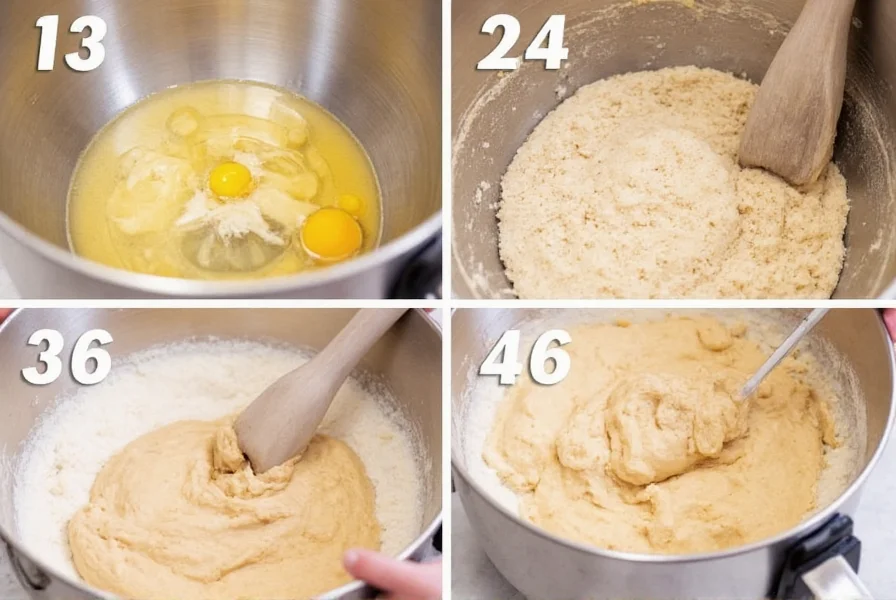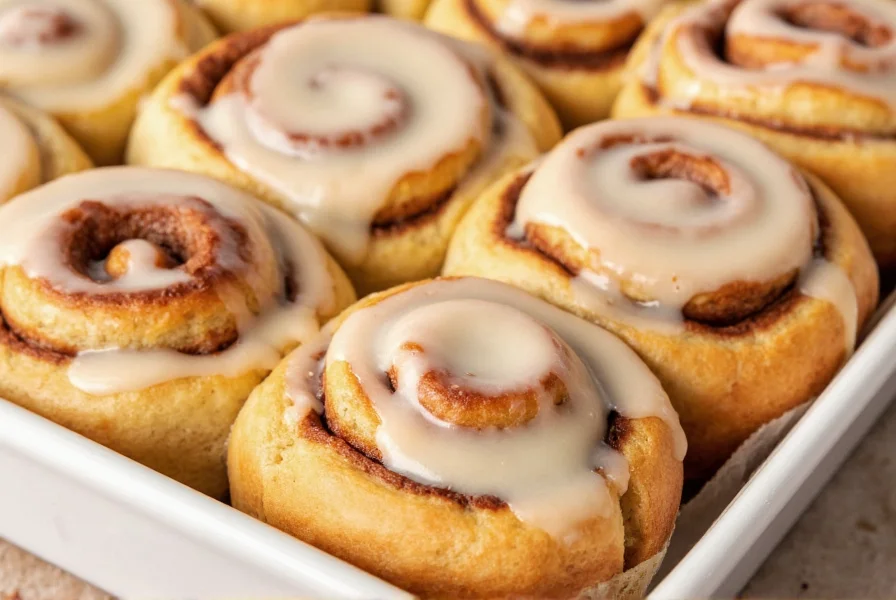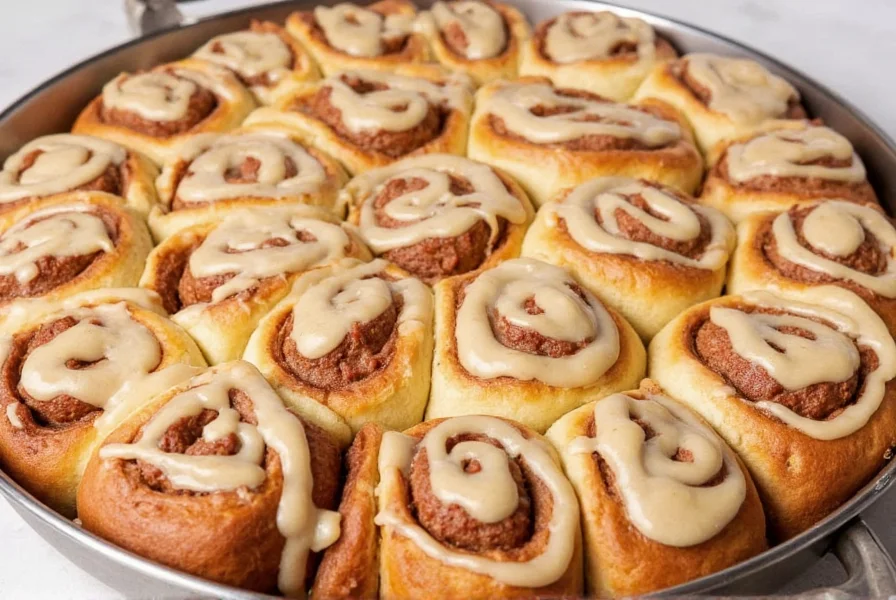Yes, you can make delicious homemade cinnamon rolls in approximately one hour using a quick-rise method that eliminates lengthy proofing times. This one hour cinnamon rolls recipe delivers soft, fluffy pastries with a perfect cinnamon swirl and creamy icing without requiring traditional overnight fermentation.
Traditional cinnamon roll recipes often demand 3-4 hours of rising time, making them impractical for same-day baking. The secret to achieving one hour cinnamon rolls lies in optimizing yeast activation and using a warm environment to accelerate dough development. Professional bakers have developed techniques that maintain flavor complexity while significantly reducing preparation time.
The Science Behind Quick Cinnamon Rolls
Understanding yeast behavior is crucial for fast cinnamon rolls from scratch. Instant yeast (also called rapid-rise yeast) activates more quickly than active dry yeast, especially when combined with warm liquid (120-130°F) and a small amount of sugar. This creates an ideal environment for rapid fermentation without compromising texture.

One Hour Cinnamon Rolls Recipe
This tested recipe yields 12 perfect cinnamon rolls with minimal hands-on time. The key is maintaining consistent temperature throughout the process.
Ingredients
- 2¼ tsp instant yeast
- ½ cup warm whole milk (120-130°F)
- ¼ cup granulated sugar
- ¼ cup unsalted butter, melted
- 1 large egg, room temperature
- 3 cups all-purpose flour
- ½ tsp salt
Filling
- ⅓ cup packed brown sugar
- 2 tbsp ground cinnamon
- 3 tbsp softened butter
Icing
- 4 oz cream cheese, softened
- ¼ cup powdered sugar
- 2 tbsp milk
- ½ tsp vanilla extract
Step-by-Step Instructions
- Mix dough ingredients: Combine warm milk, sugar, melted butter, and yeast. Wait 5 minutes until foamy. Add egg, then gradually mix in flour and salt until a soft dough forms.
- Knead: Knead 5 minutes by hand or 3 minutes with dough hook until smooth and elastic. Proper kneading develops gluten structure for fluffy one hour cinnamon rolls.
- First rise: Place dough in greased bowl, cover with damp cloth, and let rise in warm spot (85°F) for 20 minutes - not the traditional 1-2 hours.
- Roll and fill: Roll dough into 12x16 inch rectangle. Spread softened butter, then sprinkle cinnamon-sugar mixture evenly. Roll tightly from long side.
- Second rise: Cut into 12 slices and place in greased pan. Cover and let rise 15-20 minutes until nearly doubled.
- Bake: Bake at 375°F for 18-22 minutes until golden brown. Prepare icing while baking.

Temperature Control Tips for Success
Maintaining proper temperature is the most critical factor for 60 minute cinnamon rolls. Create a proofing environment by placing dough near (not on) a warm oven, or use your microwave: heat 1 cup water to boiling, then place bowl of dough inside with the hot water.
| Stage | Optimal Temperature | Time Required |
|---|---|---|
| Liquid for yeast | 120-130°F | 5 minutes activation |
| First rise | 80-85°F | 20 minutes |
| Second rise | 80-85°F | 15-20 minutes |
| Baking | 375°F | 18-22 minutes |
Common Mistakes to Avoid
Many quick cinnamon roll recipes fail because of these errors:
- Using water that's too hot - kills yeast, preventing rise
- Skipping the kneading step - results in dense, chewy texture
- Over-flouring the surface - creates dry, tough rolls
- Rushing the second rise - leads to compact texture
Storage and Reheating Instructions
Your one hour cinnamon rolls are best enjoyed fresh, but can be stored:
- Room temperature: 2 days in airtight container
- Refrigerated: 5 days with icing separate
- Reheating: 10-15 seconds in microwave or 5 minutes at 300°F oven
Ingredient Substitutions
For dietary needs, try these adjustments without compromising the fast cinnamon rolls from scratch timeline:
- Dairy-free: Use coconut milk and vegan butter
- Gluten-free: Substitute 1:1 gluten-free flour blend
- Lower sugar: Reduce filling sugar by 25% without affecting rise
Frequently Asked Questions
Can I make one hour cinnamon rolls without a stand mixer?
Yes, you can make one hour cinnamon rolls entirely by hand. Knead the dough for 5-7 minutes until smooth and elastic. The key is developing sufficient gluten structure through manual kneading to support the quick rise process.
Why didn't my quick cinnamon rolls rise properly?
Most failed rises occur due to incorrect liquid temperature (too hot kills yeast, too cold slows activation) or expired yeast. Ensure your yeast is fresh and liquid is between 120-130°F. Creating a warm, draft-free environment (80-85°F) during rising is essential for successful one hour cinnamon rolls.
Can I prepare the dough ahead of time?
While this recipe is designed for same-day preparation, you can mix the dough, complete the first rise, then refrigerate overnight. When ready to bake, let the shaped rolls complete their second rise at room temperature for 30-40 minutes before baking. This modified approach still yields excellent results with minimal morning preparation.
How do I prevent cinnamon rolls from becoming dry?
To maintain moisture in your one hour cinnamon rolls, avoid overbaking (remove when internal temperature reaches 190°F) and don't over-flour during rolling. The melted butter in the filling creates a moisture barrier, and proper storage in an airtight container preserves freshness. Reheating with a damp paper towel helps restore moisture.











 浙公网安备
33010002000092号
浙公网安备
33010002000092号 浙B2-20120091-4
浙B2-20120091-4